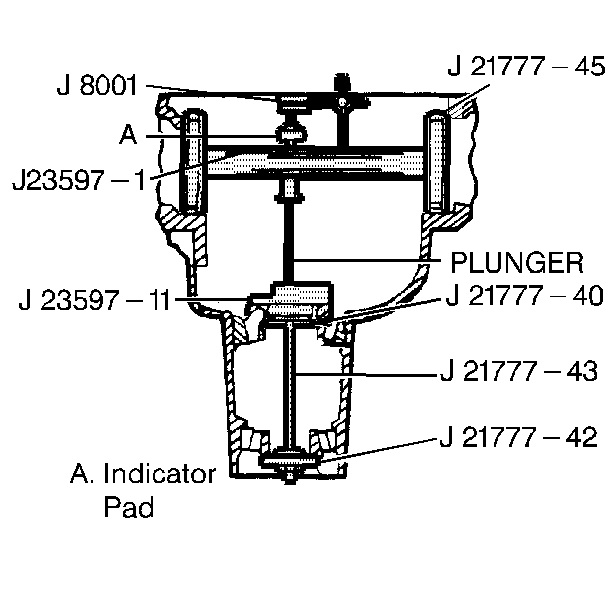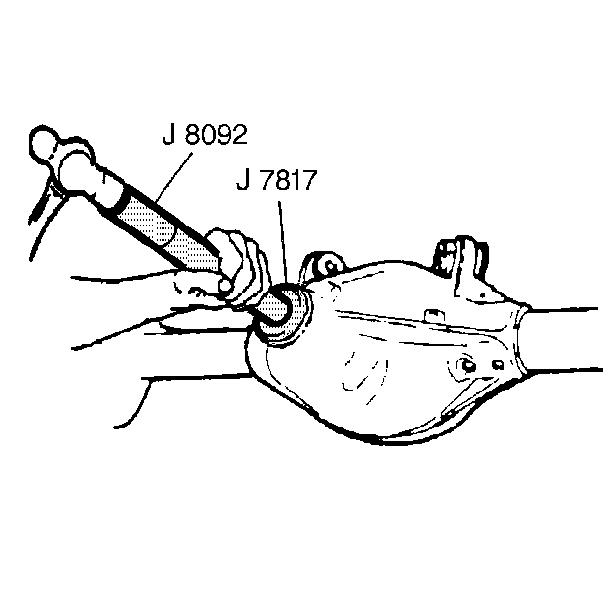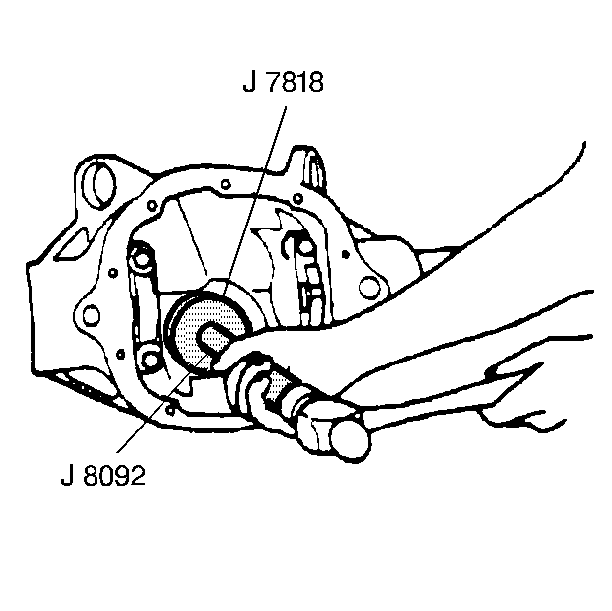- Clean all the gauge parts.
- Lubricate the front and rear pinion bearings with axle lubricant.

- Place the bearings into
the pinion bearing cups. Install the J 21777-40
, the J 21777-42
, the J 21777-43
,
and the J 23597-11
into the pinion bore.
Notice: Use the correct fastener in the correct location. Replacement fasteners
must be the correct part number for that application. Fasteners requiring
replacement or fasteners requiring the use of thread locking compound or sealant
are identified in the service procedure. Do not use paints, lubricants, or
corrosion inhibitors on fasteners or fastener joint surfaces unless specified.
These coatings affect fastener torque and joint clamping force and may damage
the fastener. Use the correct tightening sequence and specifications when
installing fasteners in order to avoid damage to parts and systems.
- Hold the stud stationary
at the flats of the stud.
Tighten
Tighten the stud nut to 2.2 N·m (20 lb in).
- Rotate the gauge plate and bearings several complete revolutions
in order to seat the bearings.
- In order to keep the gauge plate in rotation, torque the stud
nut to 1.6-2.2 N·m (15-25 lb in).
Tighten
Tighten the stud nut to 1.6-2.2 N·m (15-25 lb in).
- Assemble the J 21777-45
, the J 23597-11
,
and the J 8001
to the differential
bearing bores. The bores must be clean and free of burrs.

- Install the side bearing
caps.
- Tighten the bolts finger tight.
- Rotate the gauge plate until the gauging areas are parallel with
the discs.
- Position the gauge shaft assembly in the carrier so that the dial
indicator rod is centered on the gauge area of the gauge block.
- Set the dial indicator at zero. Push the indicator shaft down
until the needle rotates approximately 3/4 turn clockwise. Tighten
the dial indicator in this position.
- Slowly rotate the gauge shaft back and forth until the dial indicator
reads the greatest deflection. This shows when the indicator needle is centered.
- Set the dial indicator to zero, at the point of greatest deflection.
Repeat the rocking action of the gauge shaft in order to verify the zero reading.
- Rotate the gauge shaft until the dial indicator rod does not touch
the gauge block.
- Record the actual number on the dial indicator. Do not record
the number that represents how far the needle travels. This value is the nominal
pinion setting.
Example: If the indicator needle moved counterclockwise 1.70 mm
(0.067 in) to a dial reading of 0.84 mm (0.033 in), record
the dial reading of 0.84 mm (0.033 in). Do not record the
reading of 1.70 mm (0.067 in). The dial indicator should
be within the 0.50-1.27 mm (0.020-0.050 in)
range.
- All drive pinion gears are manufactured to a nominal depth with
no markings. The dial indicator reading is the shim selection.
- Remove the bearing caps and depth gauging tools.
- Install the correct pinion shim to the pinion.




